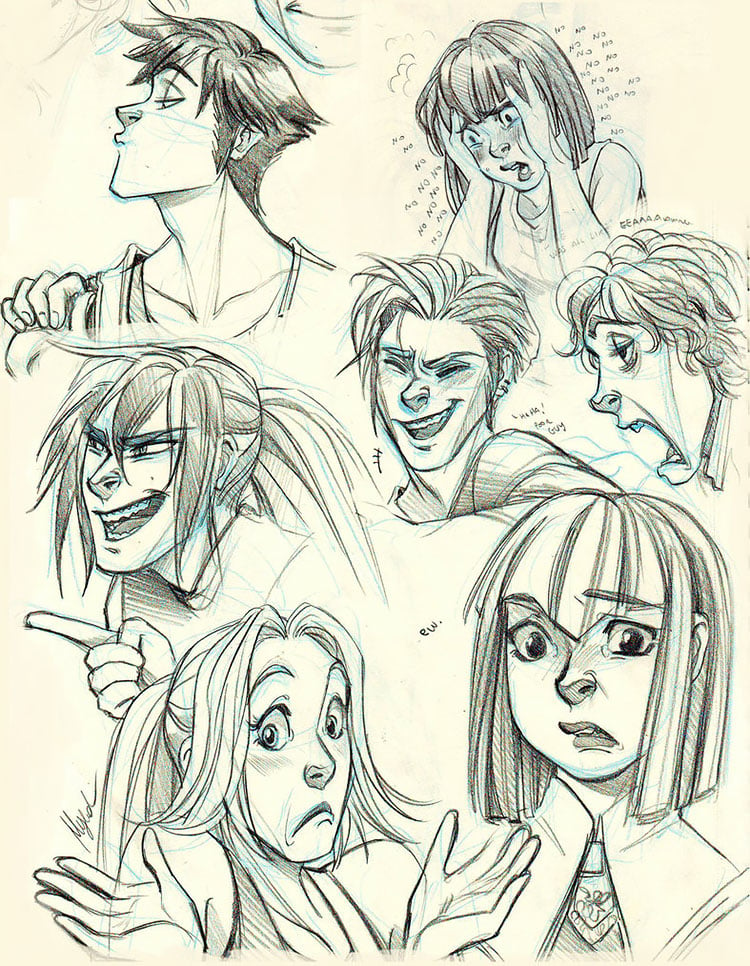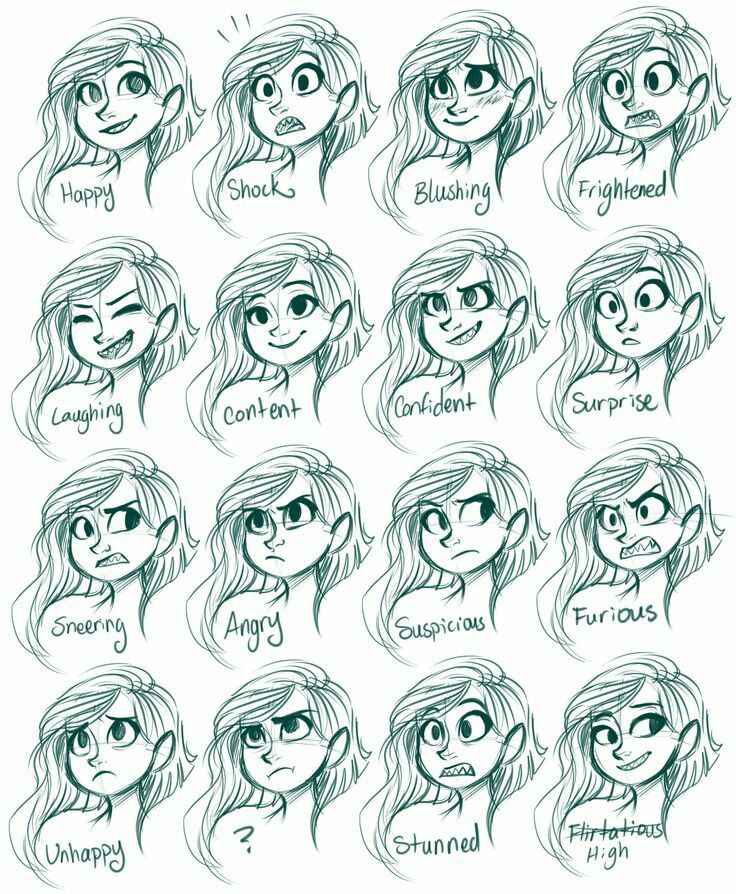
Look at your drawing side-by-side like I have mine. Does the expression match? Does it have an organic life to it? What did you get right and where could your lines be better, more expressive or more accurate? Just like in all the other tutorials, let me guide you through the process. Hope you are excited. Now, it’s time to get good at drawing them. And the only way that happens is through art mileage. We’ve covered the basic knowledge behind how we make facial expressions. I highly suggest that you get Making Comics by Scott McCloud and start breaking down many of the most common expressions. Holding back the Tears - This example shows off another way to mix things up. A great way to get a subtler look to your emotion is to only add the modifier to half the face. Here we add sadness but only to one side of the face. It gives the appearance of internalized sadness. Suspicious - is the act of showing distrust. Distrust is a kind of FEAR. Then because of the threat of potential harm we add in a lowered brow from ANGER to show the defensive stance in the face.Ĭaught Red-Handed - Is the moment when you get spooked. Since there is a potential for trouble we can assume FEAR. Because the fear came suddenly we add SURPRISE.Ĭruel - When you think about it, cruelty is just the act of getting JOY out of pain and ANGER. These are examples of some combinations. I literally copied and pasted the different features from each of the Big Six to demonstrate how easily this can be done. Think logically about what makes up certain feelings and you can come up with a great system for drawing expressions. Let’s talk through these examples.


K - These muscles push the chin together creating a pouting look. J - These muscles are the ones that allow us to speak. I - This is the muscle that allows our mouth to frown. H - This one I like to call the “cheesy smile”. It will react to all of the muscles connected to it. It’s known as the sneering muscle.į - This is the tried and true muscle that allows us to smile. It allows us to squint our eyes.Į - These three branching muscles collectively make up what we use to pull up our cheeks. This will get our eyes wide open, possibly when we’re scared.ĭ - This muscles surrounds the eyes. With this muscle we are able to lift our brow up, like we do when we look surprised.ī - This is the brow muscle. This muscle allows us to push our brow down, which usually means a frown.Ĭ - The eyelid muscle.
#Face expressions drawings skin
I am going to break them down one by one and explain how they move the skin to create an expression.Ī - This is the forehead muscle. These muscles are all any of us need to make the hundreds of expressions that we use everyday. One half shows all of the facial muscles in a simplified form. Take a look at this diagram of a woman’s face.
#Face expressions drawings how to
With this tutorial we will examine all the muscles in the face. Then, we will use that information to dissect the core expressions. From there, we will combine these expressions to create more nuanced versions. And lastly, I’ll walk you through how to go about drawing a dynamic facial expression. So now, as storytellers, how do we tap into this power of connection with the audience? You guessed it: facial expressions.įor every emotion that we can have, there is a correlating facial expression. We have grown accustomed to seeing these facial expressions when we communicate and each expression can even be broken down into the individual muscles in the face.ĭisclaimer: In this tutorial, we will build upon the previous tutorials that have focused on how to draw the facial features. I highly suggest that you start with those tutorials before this one.

At its core, a good story is all about emotional connection. People can empathize most with characters’ emotions rather than their individual problems. Everyone remembers times when there were happy or depressed or unmotivated, so it’s easy to tap into those feelings when storytelling. The emotional spectrum is vast and memorable.


 0 kommentar(er)
0 kommentar(er)
